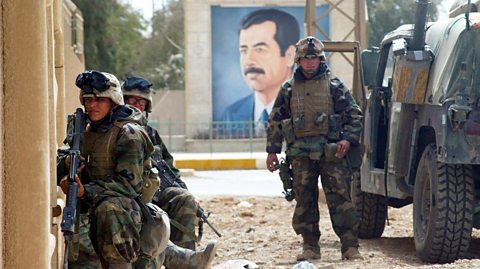Background to the conflict
Vietnam had been a French colonyA country, state or territory ruled over by another country, state or territory. before it was occupied by the Japanese during World War Two.
After World War Two, it was returned to French control, but many Vietnamese people wanted independence.
As a result, in the 1950s, the French found themselves fighting a war against the Viet Minh, an organisation dedicated to getting rid of foreign powers from Vietnam.
Worried about the spread of communismA system of running a country in which all means of production such as tools, factories and raw materials, are owned by the community as a whole. Private property does not exist and each individual contributes according to their ability and receives according to their needs. This means there is no hierarchy of social class. in South East Asia, the USA began to financially support the French war effort in Vietnam.
In 1954, the French were finally defeated by the Viet MinhA communist-dominated nationalist movement, formed in 1941, that fought for Vietnamese independence from French rule. Members of the Viet Minh later joined with the Vietcong. at the Battle of Dien Bien Phu.
The Geneva Agreement then divided Vietnam along the 17th parallelA line of latitude 17 degrees above the equator. This became the political boundary between North and South Vietnam in 1954. into two zones - in North Vietnam, Ho Chi Minh set up a communist dictatorship A country ruled by someone who has complete authority. and in South Vietnam the USA backed Ngo Dinh Diem.
Ho Chi Minh wanted to unite all of Vietnam under his rule.
Ngo Dinh Diem, an unpopular leader, was out of touch with the South Vietnamese people.
Why did America become involved in Vietnam?
- The policy of containmentAn American policy to try and stop communism from spreading to other countries. led the US to support the South Vietnamese government. They believed in the domino theoryAn American belief that if one country became communist, others would quickly follow; like a row of dominoes falling down and knocking each other over. and feared if Vietnam fell to communismA system of running a country in which all means of production such as tools, factories and raw materials, are owned by the community as a whole. Private property does not exist and each individual contributes according to their ability and receives according to their needs. This means there is no hierarchy of social class., other countries in South East Asia would follow.
- South Vietnam was a useful satellite stateAn officially independent country that is strongly influenced or controlled by another country. because it was rich in tungsten, tin and rubber.
- North Vietnamese gunboats fired upon the Maddox, a US destroyer in the Gulf of Tonkin. The USA CongressThe legislative body of the US government, made up of the Senate and the House of Representatives. then gave the President the right to use “all necessary measures” in the war, without having to consult Congress.
- Like Kennedy, President Johnson was convinced that America’s vast wealth and power would ensure victory in any war.
- The US believed that China and the USSR were behind North Vietnam’s attacks upon the south.
The Vietcong
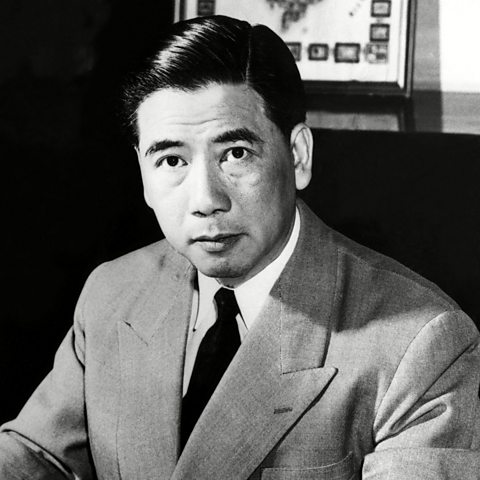
Ngo Dinh Diem’s government was unpopular with ordinary people in South Vietnam who began to give their support to the VietcongVietnamese communists who fought against South Vietnam and the US in the Vietnam War. - a group set up to reunite the country.
They were particularly popular with Vietnamese peasant farmers.
The Vietcong were also aided and supplied by communismA system of running a country in which all means of production such as tools, factories and raw materials, are owned by the community as a whole. Private property does not exist and each individual contributes according to their ability and receives according to their needs. This means there is no hierarchy of social class. North Vietnam.
In 1959, Ho Chi Minh declared a war to overthrow the South Vietnamese government and unite Vietnam under communist rule with the support of the Vietcong.

How the USA got involved in Vietnam
The non-communist government of South Vietnam looked in danger of being overthrown by the communismA system of running a country in which all means of production such as tools, factories and raw materials, are owned by the community as a whole. Private property does not exist and each individual contributes according to their ability and receives according to their needs. This means there is no hierarchy of social class.-backed VietcongVietnamese communists who fought against South Vietnam and the US in the Vietnam War. guerrillas.
The USA was operating a policy of containmentAn American policy to try and stop communism from spreading to other countries. and they feared the domino theoryAn American belief that if one country became communist, others would quickly follow; like a row of dominoes falling down and knocking each other over.; in this instance, they viewed Vietnam as a wobbly domino.
Diem’s assassination
The USA had given millions of dollars to support Ngo Dinh Diem’s government but this was unsuccessful.
They began to realise that force was needed and this meant American soldiers in Vietnam.
Ngo Dinh Diem was assassinated in November 1963 and this opened the door for the USA to get involved in order to ensure ‘stability’ and beat back the communismA system of running a country in which all means of production such as tools, factories and raw materials, are owned by the community as a whole. Private property does not exist and each individual contributes according to their ability and receives according to their needs. This means there is no hierarchy of social class. threat.
The Gulf of Tonkin
In August 1964, the destroyer USS Maddox, an American naval vessel, was attacked in the Gulf of Tonkin, just off the coast of North Vietnam, by North Vietnamese torpedo boats.
This provoked President Johnson into retaliating with military attacks in North Vietnam.
The Tonkin Resolution passed by CongressThe legislative body of the US government, made up of the Senate and the House of Representatives. allowed him to take whatever action was necessary to deal with the crisis.
In March 1965, the first ground troops were sent to Vietnam.
The actions of the USA 1965-73
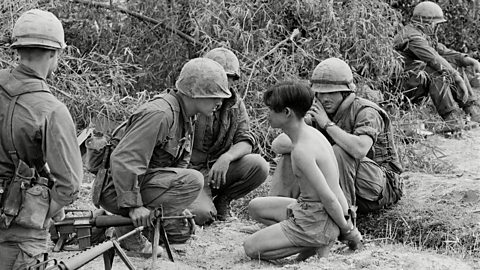
| Action | What it meant |
|---|---|
| Operation Rolling Thunder | President Johnson ordered the bombing of strategic military targets in North Vietnam. However, bombing was highly inaccurate due to the jungle landscape and the lack of industrial targets in North Vietnam. |
| Conscripts | Many US soldiers were inexperienced and were no match for the VietcongVietnamese communists who fought against South Vietnam and the US in the Vietnam War. who knew the terrain well. |
| Search and destroy policy | This policy involved sending soldiers into the jungle and villages of Vietnam. It often meant soldiers were easy targets for Vietcong guerrilla attacks as the Vietcong were far more adept in the jungle than the American soldiers. This tactic also led to a high number of civilian casualties, destruction of villages and atrocities, all of which damaged the USA’s reputation abroad. |
| Chemicals | The USA used jets to dump napalm, a chemical that burnt skin to the bone, on suspected Vietcong strongholds. They also used Agent Orange, a powerful defoliant (chemicals used to kill leaves on trees and plants), to destroy jungle cover in order to search for the Vietcong more easily. |
The My Lai Massacre
On 16 March 1968, US troops led by Lieutenant William Calley targeted My Lai, a village of around 700 people in South Vietnam.
Their aim was to find members of the VietcongVietnamese communists who fought against South Vietnam and the US in the Vietnam War..
In the massacre that followed, over 300 civilians died.
The army tried to cover the incident up to avoid bad publicity.
However, the story leaked out to a national newspaper, The New York Times.
The newspaper published the details in November 1969.
This, along with colour pictures of the massacre in a magazine, shocked the public and forced the army to act.
In 1971, Calley was placed on trial and convicted of war crimes.
His sentence was life imprisonment, but this was not carried out.
The My Lai Massacre is an example of the failure of America’s search and destroy tactic.
It also demonstrated the US people’s changing feelings about the Vietnam War.
Change of Presidency
By 1969, Johnson was hugely unpopular (there were lots of anti-war protests) and Richard Nixon had won the recent Presidential election in America.
Nixon was determined to remove the US from the Vietnam War.
He made a number of decisions:
- Increased bombing against North Vietnam.
- Secret bombings of neighbouring countries that were being used to supply the Vietcong.
- Vietnamisation: Dependence on the USA would end and South Vietnam would stand on its own two feet.
Actions of the Vietcong
The VietcongVietnamese communists who fought against South Vietnam and the US in the Vietnam War. used the cover of the jungle to their advantage, as well as developing a vast network of underground tunnels which they used to evade capture.
They fought a hit-and-run guerilla warfareA military strategy in which small groups of people - who are not usually regular soldiers - fight using irregular tactics. It is difficult for large armies to fight against this method using traditional tactics. against inexperienced American soldiers, many of whom were young conscriptA person enlisted in an army compulsorily, as opposed to voluntarily..
The threat of an invisible enemy and hidden traps had a demoralisingSomething which causes a person to experience a loss of confidence or belief in what they are doing or trying to accomplish. psychological impact on US troops.
The Ho Chi Minh trail
Another advantage the Vietcong had was the use of the Ho Chi Minh trail.
They were kept well supplied by a constant stream of food and weapons from North Vietnam using this jungle trail which wound through the neighbouring countries of Laos and Cambodia.
The Tet Offensive
In 1968, the VietcongVietnamese communists who fought against South Vietnam and the US in the Vietnam War. used the cover of the Vietnamese New Year (known as Tet) celebrations to change tactics and launch a massive attack on US-held areas across South Vietnam.
The attack was a success for the Vietcong, although ultimately they were driven back by the US Army.
However, it showed the Americans that despite all the soldiers, bombs and money spent in Vietnam, they were not making progress against the Vietcong or communismA system of running a country in which all means of production such as tools, factories and raw materials, are owned by the community as a whole. Private property does not exist and each individual contributes according to their ability and receives according to their needs. This means there is no hierarchy of social class..
Many historians see the Tet Offensive as a turning point in America’s mission in Vietnam.
The end of the war
By 1973, a peace treaty was signed in Paris.
The terms of the treaty allowed for US withdrawal and the VietcongVietnamese communists who fought against South Vietnam and the US in the Vietnam War. to remain in the South.
It also put off a decision about the country’s political future until a later date.
In 1974, the fighting between North and South restarted but no help came from the USA and in 1975 North Vietnam attacked the South.
By the end of April 1975, Vietnam was unified under communismA system of running a country in which all means of production such as tools, factories and raw materials, are owned by the community as a whole. Private property does not exist and each individual contributes according to their ability and receives according to their needs. This means there is no hierarchy of social class. leadership.
The role of China and the USSR
As the United States poured men and money into South Vietnam, Chinese and Soviet involvement in Vietnam also increased.
However, neither the USSR nor China was open about the nature of their support.
China
- Initially sent soldiers and military equipment.
- Helped repair road, rail and airstrip networks.
USSR
- Major supplier of military aid (trained pilots, gave planes, tanks etc).
- Became North Vietnam’s main supplier in 1965 with financial aid, military equipment and advisors.
- Supplied deliveries of food, petroleum, transportation equipment, iron and steel, other metals, fertilisers, arms, munitions and other commodities.
The Vietnam War - a brief timeline
- 1954: French defeated by the Viet MinhA communist-dominated nationalist movement, formed in 1941, that fought for Vietnamese independence from French rule. Members of the Viet Minh later joined with the Vietcong. at Dien Bien Phu. Vietnam is split along the 17th parallelA line of latitude 17 degrees above the equator. This became the political boundary between North and South Vietnam in 1954.
- 1960: VietcongVietnamese communists who fought against South Vietnam and the US in the Vietnam War. set-up (National Liberation Front). Aim: to remove Diem and unite Vietnam under Ho Chi Minh.
- 1963: Diem assassinated by Vietcong. JFK assassinated - Johnson becomes President.
- 1964: Gulf of Tonkin Incident - Tonkin Resolution passed. Johnson orders increase in US tactics.
- 1965: Operation Rolling Thunder bombings. Increase in: troops; chemical weapons; search and destroy.
- 1968: Tet Offensive turning point. Nixon becomes President.
- 1970: Vietnamisation begins: withdrawal of US troops. Bombing of North Vietnam, Laos and Cambodia. Peace talks begin.
- 1973: The Paris Peace treaty is signed.
- 1975: South Vietnam falls to communismA system of running a country in which all means of production such as tools, factories and raw materials, are owned by the community as a whole. Private property does not exist and each individual contributes according to their ability and receives according to their needs. This means there is no hierarchy of social class..
Consequences of the war for the USA
The bombing campaign failed because the bombs often fell into an empty jungle, missing their targets.
The brutal tactics used by US troops often drove more Vietnamese civilians to support the VietcongVietnamese communists who fought against South Vietnam and the US in the Vietnam War..
The North Vietnamese guerrillas knew the jungle and made use of guerilla warfareA military strategy in which small groups of people - who are not usually regular soldiers - fight using irregular tactics. It is difficult for large armies to fight against this method using traditional tactics. as well as elaborate underground bases and tunnels to shelter from US bombs.
Despite the USA’s superior military strength, it could not stop the spread of communismA system of running a country in which all means of production such as tools, factories and raw materials, are owned by the community as a whole. Private property does not exist and each individual contributes according to their ability and receives according to their needs. This means there is no hierarchy of social class..
The policy of containmentAn American policy to try and stop communism from spreading to other countries. had failed.
Having presented the war in Vietnam as a moral crusade against communism, the atrocities committed by the US military in Vietnam in terms of the number of civilian deaths and the use of chemical weapons had tarnished America’s image at home and abroad.
Anti-war protests gathered momentum in America, with many opposing the draftThe process where men were selected for compulsory military service..
Events like the My LaiThe place where US soldiers massacred hundreds of unarmed Vietnamese civilians, mostly women and children, on 16 March 1968, during the Vietnam War. It has become a symbol of US war crimes in Vietnam. were reported in the US press as well as film footage of US soldiers burning homes and of the effects of napalmA petroleum jelly used in flamethrowers or fire bombs that burns a victim at high temperatures. The fires it causes are very difficult to put out., all of which turned public opinion against the war.
Impact on relations
China, the USSR and USA entered into a period of greater understanding of each other’s system of government.
USA
- The USA was humiliated internationally.
- containmentAn American policy to try and stop communism from spreading to other countries. had failed but not all of Indochina fell to communism.
USSR
- Soviet power did not increase - relations were often strained with Vietnam.
Test your knowledge
More on International relations, 1945-2003
Find out more by working through a topic
- count10 of 13
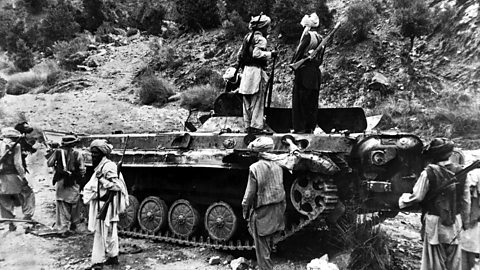
- count11 of 13
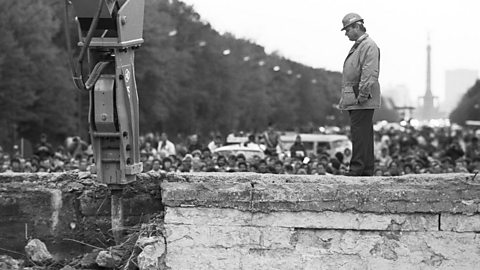
- count12 of 13

- count13 of 13
